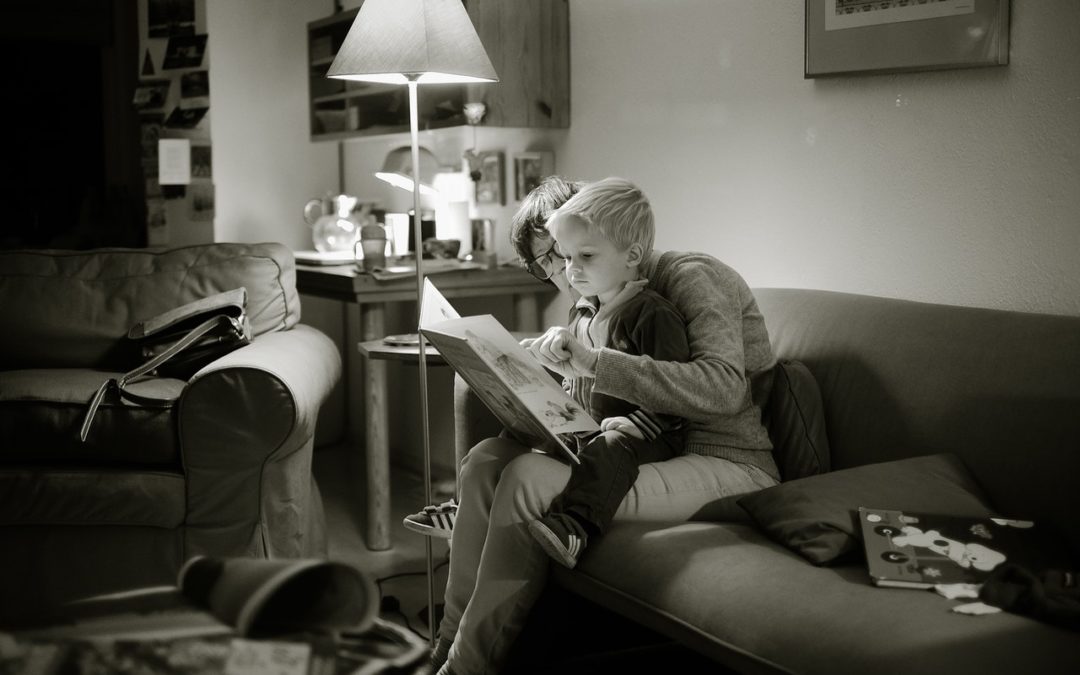Did you know that many four and five year-old children do not know their last name or the name of the street they live on? Children typically have mastered this skill by the time they have reached their fourth birthday. Doesn’t it seem odd that one child at the age of five can rattle off many former presidents’ names, along with her own name, and another child cannot?
Why is this? Could it be that some parents are talking to their children and some, unfortunately, are not? Talking to your children begins as early as birth. Although infants do not understand language, they will respond to human voices with vocalizations. For example, if you lay a baby down on a bed or flat surface, lean over the baby so you can make eye contact, and say something in an encouraging tone, the baby will respond with sounds. When you listen for sounds from your baby or whenever you hear one, say it back. You will see smiles, and you will naturally smile in return.
Even though an infant cannot use words, this is an ideal way for parents to begin communicating with their baby. Whenever a baby looks at faces, smiles, or grasps for objects, it’s appropriate for parents to react as if the baby is communicating. Parents share many communicative interactions with their children during regular daily routines and activities, starting as early as birth and, of course, continuing into the preschool years.
By age three and a half, children have accomplished the basic acquisition of grammatical speech. In other words, they are talking in complete sentences while using appropriate vocabulary and grammar. By the time most children turn five, they have a speaking vocabulary of about 2,000 words.
Of course, every child will acquire language at a different rate from every other child due to individual differences. But with the help of a language-rich environment, children can learn and develop considerable language skills before the age of five.
Daily routines within the home provide excellent opportunities for parents to help the development of their child’s language skills. For example, most parents tend to think about what they’re doing but don’t verbalize it out loud. Instead, the parent can talk to the child about what he or she is doing in the child’s presence. For instance, you may say, “My hands are dirty; I need to washy my hands.” “The doorbell is ringing; Mommy has to answer the door.” This strategy is referred to as self-talk and allows your child to understand that words match with objects and events. The child hears what is being stated and begins to add information to what is already understood. Self-talk can be used daily during interactions with your child.
Do you notice when your child is sitting quietly on the floor playing with miscellaneous toys? This is an ideal time to sit down and comment on what he or she is playing with. This strategy is called parallel talk and requires parents to describe out loud what the child is seeing, hearing, or perhaps thinking while engaging in playtime activities. For example, “You have the doll,” or “You have the book.” This strategy give parents the opportunity to comment on what the child is doing and support the development of language skills.
How about talking to your child by expanding a statement, but phrasing it in a way an adult may say it? For instance, a child may say, “Baby, sleep,” after placing a doll in a crib. The parent might respond with, “The baby is sleeping, “The baby is asleep,” or “You put the baby to sleep.” The adult models an utterance that closely matches the child’s intent and interests. The statement should be simple, so the child can comprehend it without any difficulty.
Many encounters with your child allow you to describe or explain what is going on. Something as simple as tying your child’s shoe can include words that are put to action. If you see that your child’s shoe is untied, you typically might put him on your lap and tie it. Instead of just tying the shoe, you can include some language describing what is going on: “Here, let Mommy tie your shoe” or “See Mommy tie your shoe.” Parents also can describe what they see and hear during events such as taking a walk, going to the store, or riding in a car.
The most ideal times to talk to your child are during everyday routines: mealtime, bath time, dress time, and playtime. These routines provide your child with an enjoyable opportunity to learn and use language. With your help and the use of strategies like these, you child will continue to develop and use language as a way to communicate and learn new things.
- Talking Some Sense: Parental Communication Through the Ages - September 12, 2023
- Setting a Good Example: How Children Inspire Adults - August 11, 2023
- Transforming Screen Time into Interactive Reading - July 25, 2023

Thank you!